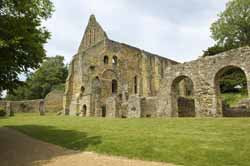Linking landscapes of Europe's past
Landscape can be understood as an area where action and interaction takes place, including a historical process of transformation over time. As such, a link is created via similar dynamics encompassing different contexts. This is the case with England and Italy before and after the Norman conquest. 'Normannitas: Landscape, identity and Norman kingdoms' (N-LINK) is an EU-funded project that explored the similarities and differences between these two countries to find answers to whether, how and why the Normans changed their settlement patterns within their kingdoms. New interdisciplinary landscape-focused methods and tools such as a geographic information system (GIS) and historic landscape characterisation (HLC) were used. Current landscapes were the starting point in the research, which included comparative analysis and case studies. Project members aimed at understanding different perceptions of the same landscapes over centuries. Additionally, work was geared towards reconstructing political and historical events that were fundamental in forming the landscapes. The project succeeded in bridging two different traditions of studies that include ancient topography and archaeology. The value of GIS and HLC was taken to a new level of potential for use in landscape management. Furthermore, the research was able to reconstruct medieval landscapes in areas of Italy and the United Kingdom. N-LINK's results can be useful to public bodies and regional services in contributing to regional strategies for historic landscape management in Italy and the United Kingdom.



